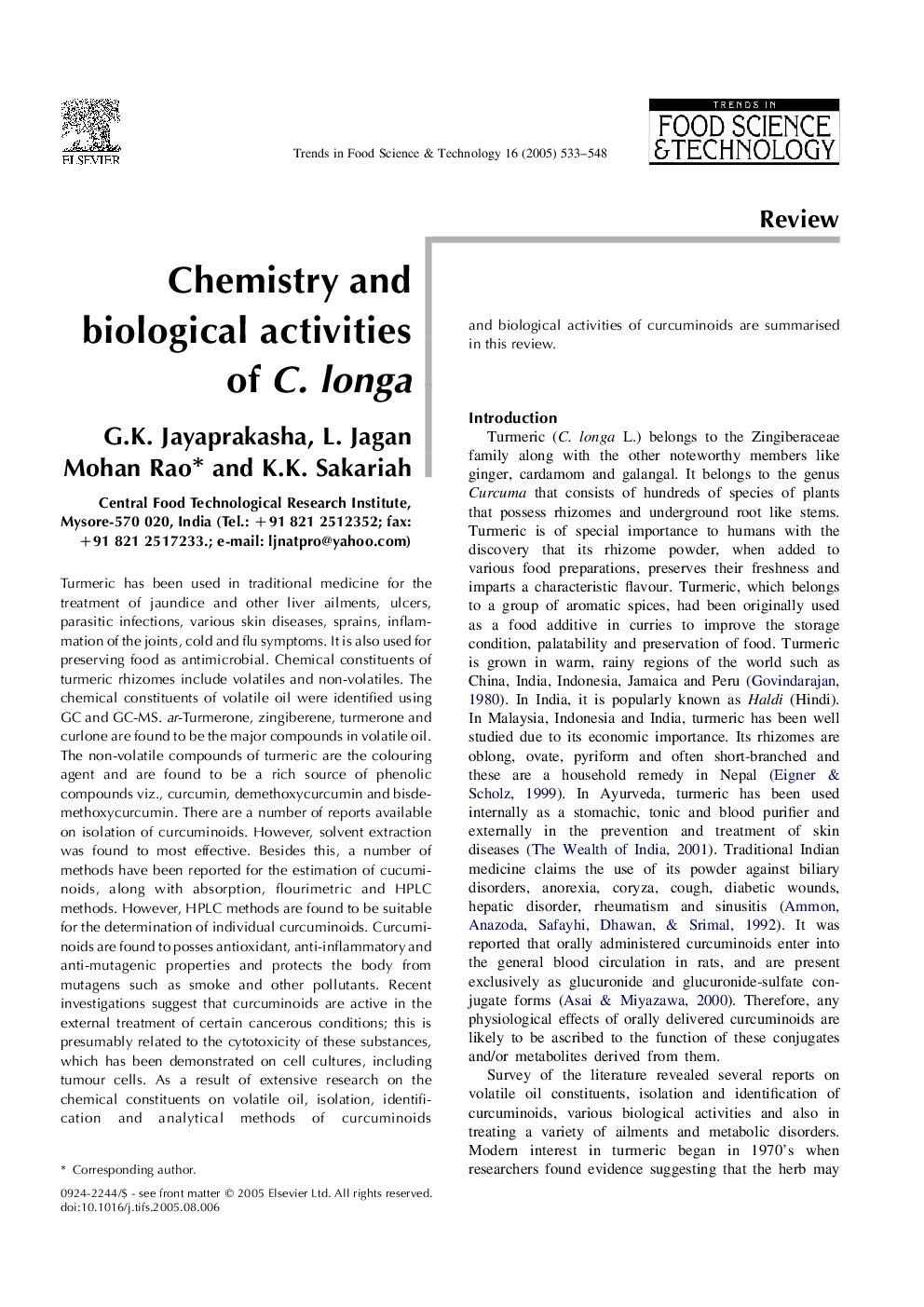| Article ID | Journal | Published Year | Pages | File Type |
|---|---|---|---|---|
| 10894982 | Trends in Food Science & Technology | 2005 | 16 Pages |
Abstract
Turmeric has been used in traditional medicine for the treatment of jaundice and other liver ailments, ulcers, parasitic infections, various skin diseases, sprains, inflammation of the joints, cold and flu symptoms. It is also used for preserving food as antimicrobial. Chemical constituents of turmeric rhizomes include volatiles and non-volatiles. The chemical constituents of volatile oil were identified using GC and GC-MS. ar-Turmerone, zingiberene, turmerone and curlone are found to be the major compounds in volatile oil. The non-volatile compounds of turmeric are the colouring agent and are found to be a rich source of phenolic compounds viz., curcumin, demethoxycurcumin and bisdemethoxycurcumin. There are a number of reports available on isolation of curcuminoids. However, solvent extraction was found to most effective. Besides this, a number of methods have been reported for the estimation of cucuminoids, along with absorption, flourimetric and HPLC methods. However, HPLC methods are found to be suitable for the determination of individual curcuminoids. Curcuminoids are found to posses antioxidant, anti-inflammatory and anti-mutagenic properties and protects the body from mutagens such as smoke and other pollutants. Recent investigations suggest that curcuminoids are active in the external treatment of certain cancerous conditions; this is presumably related to the cytotoxicity of these substances, which has been demonstrated on cell cultures, including tumour cells. As a result of extensive research on the chemical constituents on volatile oil, isolation, identification and analytical methods of curcuminoids and biological activities of curcuminoids are summarised in this review.
Related Topics
Life Sciences
Agricultural and Biological Sciences
Food Science
Authors
G.K. Jayaprakasha, L. Jagan Mohan Rao, K.K. Sakariah,
